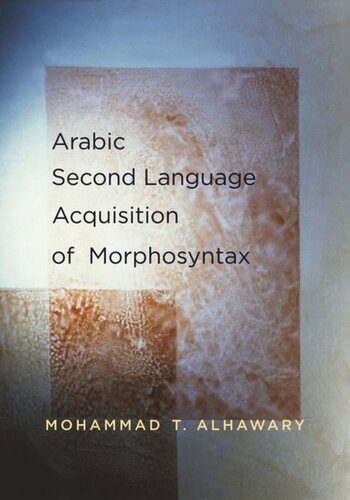

Most ebook files are in PDF format, so you can easily read them using various software such as Foxit Reader or directly on the Google Chrome browser.
Some ebook files are released by publishers in other formats such as .awz, .mobi, .epub, .fb2, etc. You may need to install specific software to read these formats on mobile/PC, such as Calibre.
Please read the tutorial at this link: https://ebookbell.com/faq
We offer FREE conversion to the popular formats you request; however, this may take some time. Therefore, right after payment, please email us, and we will try to provide the service as quickly as possible.
For some exceptional file formats or broken links (if any), please refrain from opening any disputes. Instead, email us first, and we will try to assist within a maximum of 6 hours.
EbookBell Team

0.0
0 reviewsWhile the demand for Arabic classes and preparation programs for Arabic language teachers has increased, there is a notable gap in the field of linguistic research on learning Arabic as a second language. Arabic Second Language Acquisition of Morphosyntax presents a data-driven and systematic analysis of Arabic language acquisition that responds to this growing need.
Based on large data samples collected from longitudinal and cross-sectional studies, this book explores a broad range of structures and acquisition issues. It also introduces new and comprehensive research, and it documents the successes and problems that native speakers of other languages, including English, Spanish, French, and Japanese, are likely to encounter in learning Arabic.
By integrating previously published findings with new research, the author has created a unified and streamlined resource for teachers, teachers-in-training, linguists, Arabic textbook authors, and second-language acquisition experts.